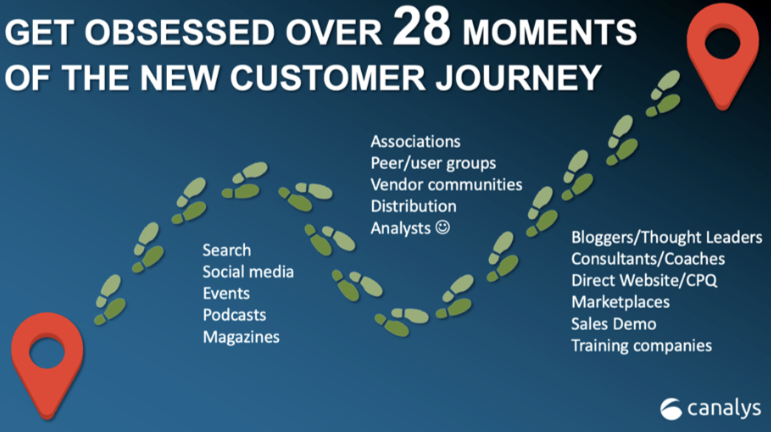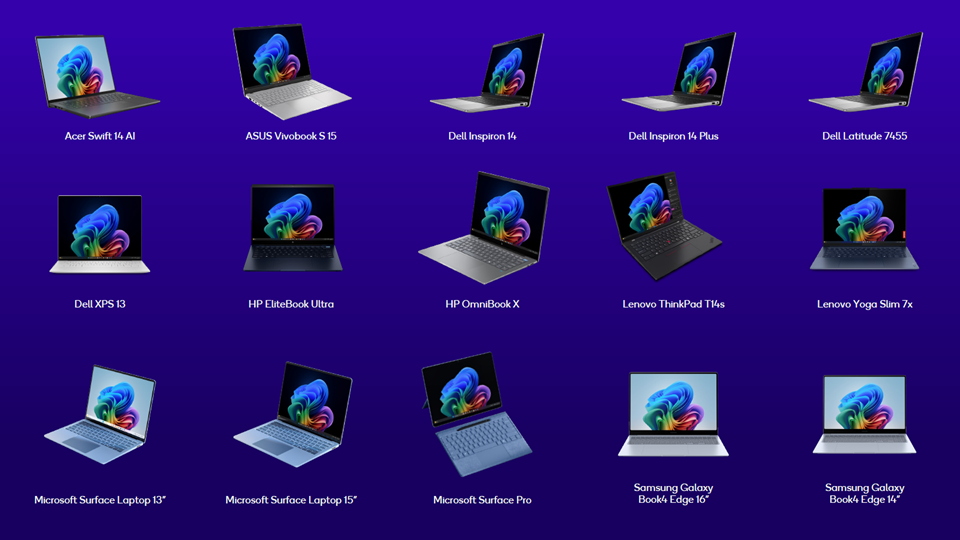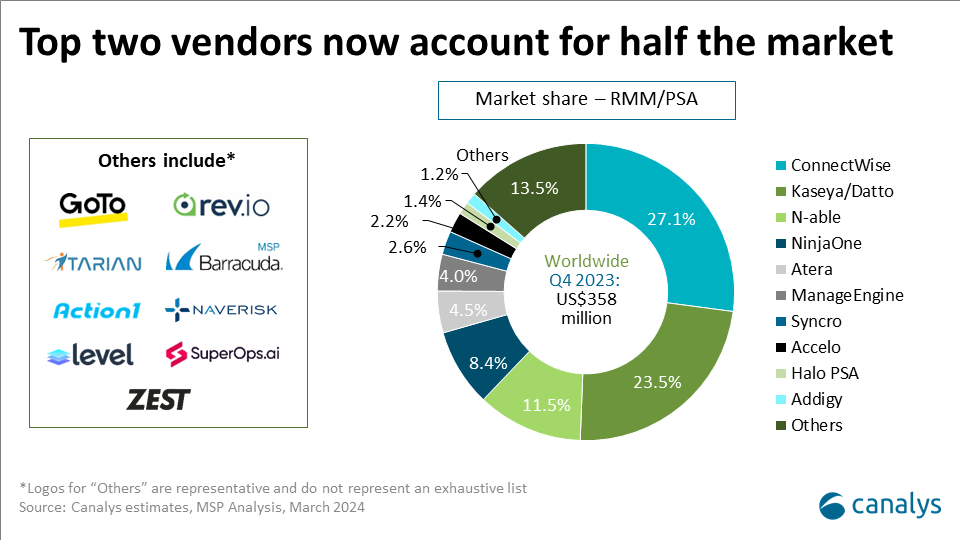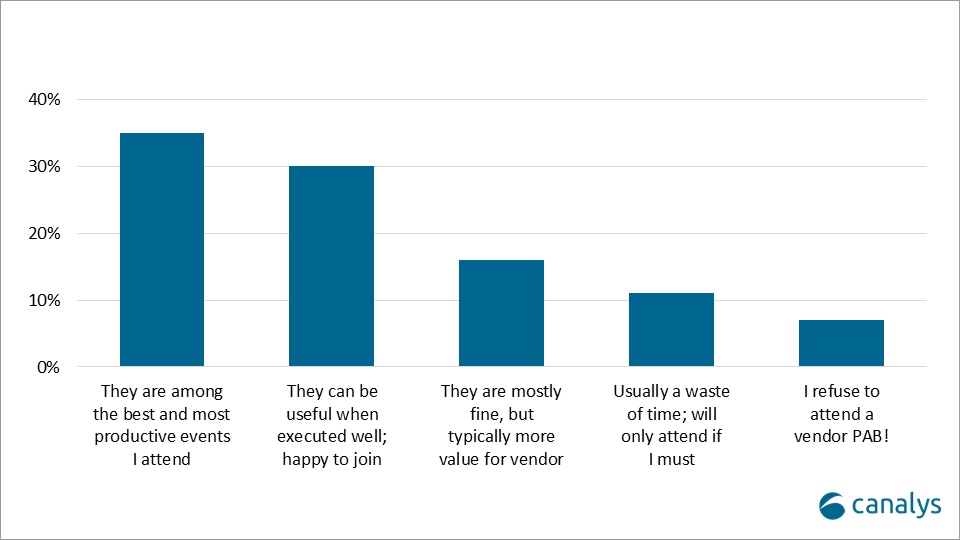Canalys is part of Informa PLC
This site is operated by a business or businesses owned by Informa PLC and all copyright resides with them. Informa PLC’s registered office is 5 Howick Place, London SW1P 1WG. Registered in England and Wales. Number 8860726.
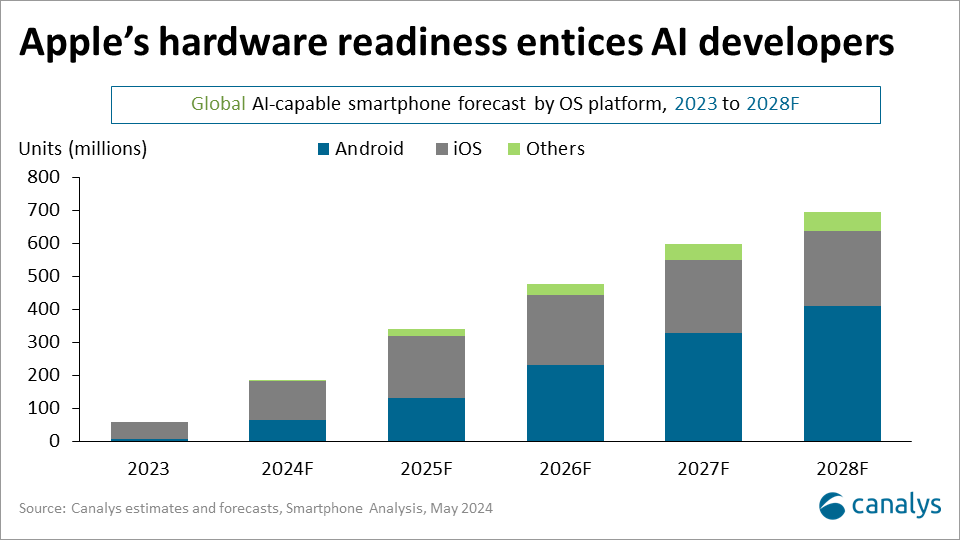
Apple unveils its AI strategy at WWDC
At WWDC, Apple unveiled Apple Intelligence, showcasing a strategic shift toward AI with a focus on hybrid models, privacy features and empowering developers. The addition of GenAI-enhanced features heightened privacy measures, and Siri's personalization upgrades signal Apple's commitment to innovation and differentiation in the evolving AI landscape.
.png)
At WWDC this week, Apple introduced Apple Intelligence, a comprehensive response to the industry on their AI strategy, 18 months after ChatGPT was launched. As predicted in our AI-capable smartphone report, the hybrid AI model approach, the focus on the developer community and differentiating through privacy features and Siri capabilities are some of the announced outstanding features. What stands out is the clear message to consumers and developers on implementing AI based on Apple values, with a significant emphasis on the human role in the decision-making process.
The overall announcements align with industry-standard offerings while setting new benchmarks to prevent the company from lagging behind its rivals.

Features in line with the industry
- Generative AI-enhanced features: GenAI-powered enhancements in native iOS apps are expected in this update. Leveraging both on-device and server large language models (LLMs), users can access GenAI capabilities throughout daily use cases such as content creation, calls, communication, and search. These features are intended to elevate end-user productivity and overall experience, although these early GenAI features are just meeting industry standards.
- Empowering developers: through significant enhancements to Xcode and Swift, along with the introduction of new APIs, Apple provides developers with an extensive toolkit to create top-tier applications. This bolstered support encourages innovation and solidifies the vendor's position as the primary hub for AI-driven services. This comprehensive framework is designed to empower innovation in AI apps, where first-party features are not sufficient for users.
Key differentiators from the industry
- Heightened privacy measures: while privacy and data security present the largest challenges for device vendors pursuing AI strategies, they also offer great opportunities for those who can address these issues. The implementation of Private Cloud Compute is a significant step forward for Apple to enhance protection, providing powerful computing capabilities while minimizing inherent risks. Additional privacy features such as accessing ChatGPT without storing user prompts or sharing user IP addresses and requesting users' permission before diverting the request to ChatGPT, are useful and likely to set new industry best practices. For Apple, prioritizing these elements in their AI offerings could be a key differentiator, fostering consumer adoption and driving strategic recovery in crucial markets such as Western Europe and the US. As concerns over data privacy and sovereignty grow, Apple's focus on these aspects positions it as a market leader, enhancing trust and loyalty among consumers and enterprises.
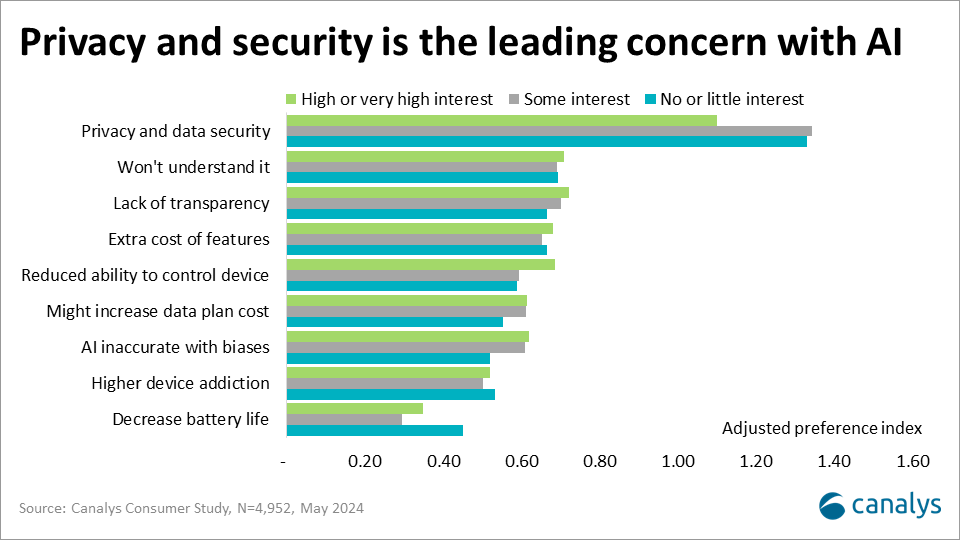
- Siri gets more personal: Apple has introduced significant personalization upgrades to Siri, enhancing user engagement and reliance. No longer a mere search prompt assistant, Siri is now equipped with a more personal touch - natural replies and context awareness, allowing access to data such as mail and calendar. With these new generative capabilities and expanded access to information, Siri transcends its role as a utility, evolving into an indispensable companion. This upgrade positions Siri as a potential avenue to unify Apple's ecosystem, integrating health data from watches, productivity features of Macs, hands-free access of AirPods and personalized suggestions to improve the end-user experience.
AI revenue opportunities for Apple
Canalys estimates that AI-capable smartphones will account for 54% of global shipments by 2028, while 75% of PCs will be AI-capable by 2028. The on-device AI on smartphones (as well as PCs) will enable at least three revenue models for device vendors - AI-as-a-feature, AI-as-a-service and AI-as-an-interface. For Apple, implementing AI is not just about catching up with industry expectations. The potential to unlock more revenue opportunities is significant.
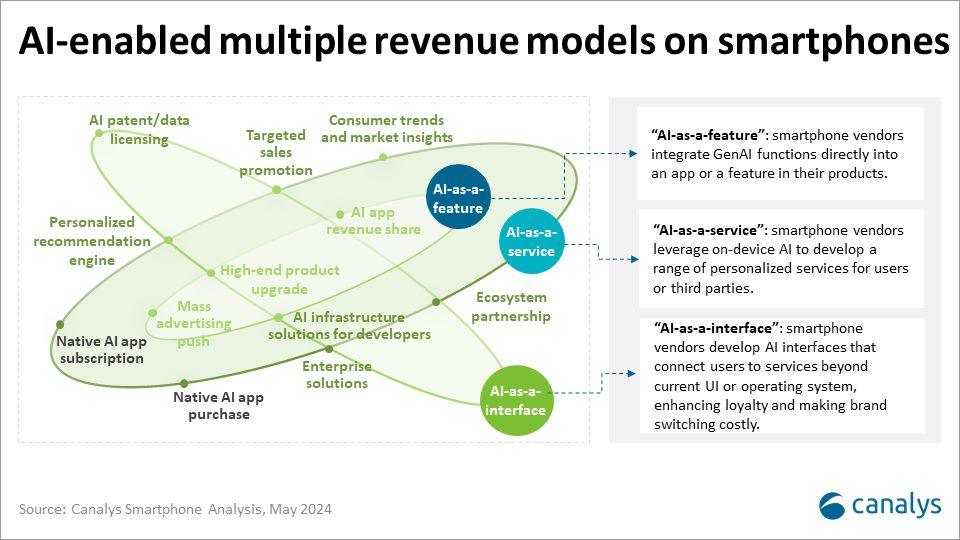
- Apple's product differentiation strategy: Apple's decision to integrate AI exclusively into its Pro lineup signals a strategic move to stimulate consumer demand by elevating its high-end offerings. This strategy shifts consumer interest toward flagship Pro models, which already account for 55% of total iPhone shipments in Q1 2024, increasing Apple's ASP and improving the financial margins of its smartphone lineup. While this places the base models at a disadvantage, with limited AI functionality, it may help mitigate the impact on the sales. This approach further differentiates the next generation of iPhones, leveraging AI software to create new value and convincing users to choose the Pro over the non-Pro models to enjoy the full suite of AI features. In the longer term, these software enhancements could drive service revenue as Apple explores improvements to increase user stickiness and grow its installed base.
- Ecosystem push: Apple is expected to bring out more advanced AI features for cross-device solutions, enhancing its industry-leading ecosystem of devices and further differentiating itself from the competition. Apple's aim for its IoT devices has always been to maintain a best-in-class positioning and integrate AI capabilities into its products to solidify this status. This strategic move will not only bolster Apple's robust ecosystem but also ensure it remains at the forefront of innovation and user experience. Canalys data shows the attach rate of the iPhones and its IoT products stays ahead of the competition. AI features to increase health tracking accuracy for Apple Watches, improve productivity for Macs and strengthen data protection for its enterprise tools would help to improve cross-device interaction, providing more differentiation against the competition in respective categories, and enable it to increase profitability, brand stickiness, and drive service revenue. Siri's role will be critical in enabling the AI-as-an-interface model for Apple, by improving functionality and creating greater synergy within the ecosystem, opening new opportunities in uncharted segments.
“One more thing”: Mainland China
Apple's AI announcement did not address a crucial market - Mainland China, Apple's second-largest market by volume and revenue, accounting for 21% of global iPhone shipments as well as that of the iPhone Pro series. In Q1 2024, Apple experienced a 25% year-over-year decline in Mainland China, with market share dropping from 20% in Q1 2023 to 15% in Q1 2024. Apple has been impacted by the resurgence of Huawei, a company with strong full-value chain capabilities in AI (Canalys insight on Huawei AI strategy). The challenge for Apple in Mainland China lies in whether it can introduce Apple Intelligence in the region, given the country's stringent regulations on AI services. As discussed in the AI-capable smartphone report, regulations including Mainland China's Personal Information Protection Law (PIPL) impact how AI models are trained and where inferencing occurs. This might necessitate different AI algorithm configurations to comply with regional norms, particularly stringent consent and data handling standards. In addition, all AI-capable smartphones shipped to Mainland China's market are likely to be mandated to use one of the commercial LLMs approved by the government. All eyes are on Apple on how to tackle the local requirements. Having said that, the high privacy standards and practices Apple set up could prove to be a plus with local regulators, which are driving AI data sovereignty and user data governance at the same time.
